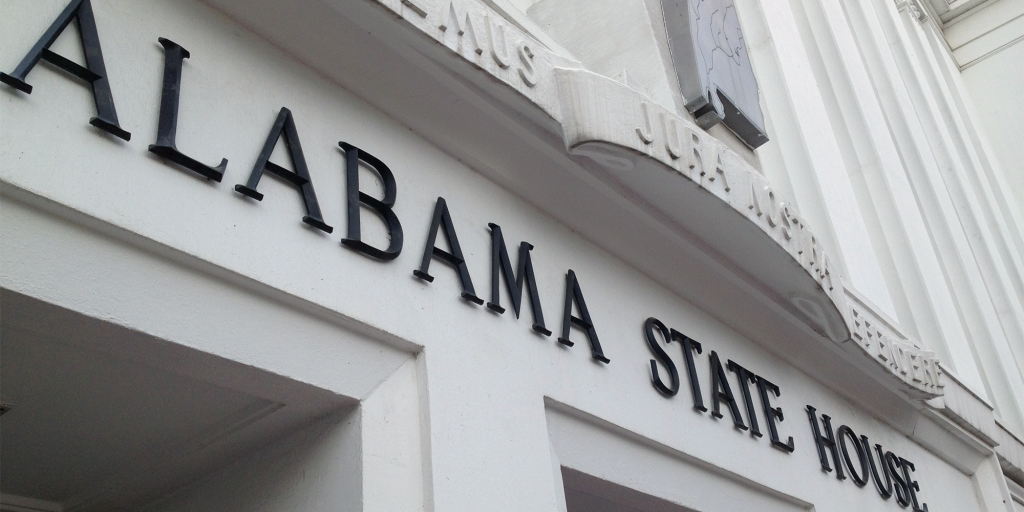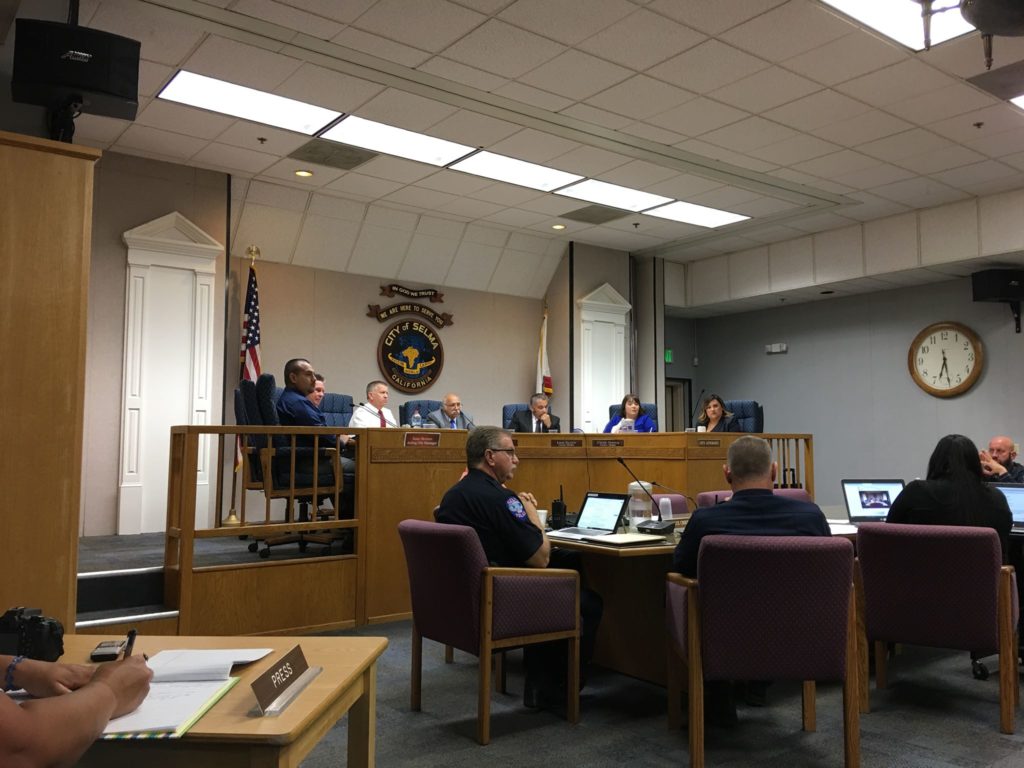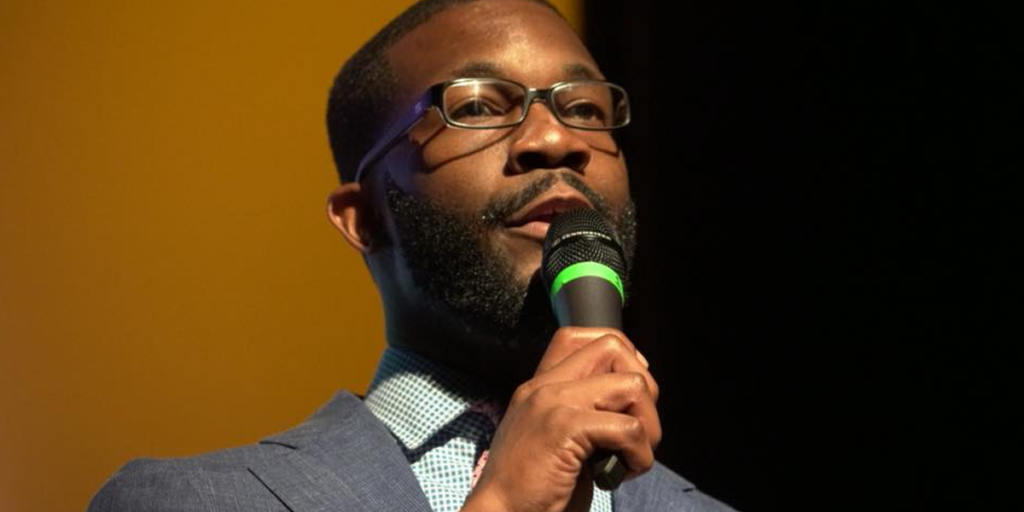Donald Trump’s budget proposal offers preview of upcoming campaign

Frustrated by a divided Congress and rifts within his own party, President Donald Trump is giving little indication in his latest budget proposal of any new policy ambitions for the coming two, or six, years. Trump’s budget plan increases spending on his border wall and the military but is light on fresh ideas heading into his re-election campaign. His budget for the next fiscal year, which has little chance of advancing in Congress, largely focuses on deep spending cuts and pushing more money toward established goals such as his long-promised wall, improving care of veterans and combating opioid abuse. Budgets may offer a president’s vision for the direction of the nation, but Trump’s latest also offers an early window into his upcoming campaign. With the Democratic race to unseat him heating up, Trump is contending with middling approval ratings, energized Democrats and political vulnerabilities in critical states. Like his predecessors, he’ll soon be called on to complete the politically loaded phrase, “Send me back to the White House so that I can …” “I think, as he gets closer to 2020, he will need to lay out what a second term would look like,” said Republican consultant Alex Conant. “Voters always want to know, ‘What have you done for me lately?’ If he doesn’t paint a picture of what his second term will look like, then the Democrats will do it for him.” The White House argues that Trump isn’t just advancing the same policies a second time over, he’s enhancing them with more detail than his first go-round, particularly in the area of trade policy. Following a State of the Union address that contained little new policy, the budget is hardly a surprise. Still, the budget can serve more than one political purpose, argued former Trump campaign aide Barry Bennett, who said the document highlights Trump’s clashes with Democrats over border and military funding. He argued that the Democratic tilt to the left also will benefit Trump as he seeks to frame the argument. Bennett said Trump’s pitch can be: “If your paycheck likes what I’ve done, send me back. If you don’t, they’ll undo it all.” Trump has already addressed much of his laundry-list agenda from 2016, notching victories in many areas while seeking to minimize losses and mixed results. He has cut taxes, exited global accords and installed conservative judges on the courts, including two Supreme Court justices. He has not succeeded in replacing President Barack Obama’s health care law, is still working on renegotiating trade deals and has struggled to secure all the funding he wants for his border wall. In all, the efforts have largely pleased his political base, but satisfaction with past performance is hardly a reliable tactic for expanding your support. Thus far, Trump’s re-election campaign moves have been laser-focused on maintaining his most ardent supporters. It’s a risky wager, laid down by the president himself, that he can overcome weakness with moderate and independent voters by turning out even more loyalists in 2020 than he did in 2016. During his aggressive push to maintain the GOP’s hold over the Senate during the midterm elections, Trump emphasized his hardline immigration rhetoric above all else. He has returned again and again to his long-promised border wall, even forcing the government to partially shut down in an effort to win funding. The latest budget also calls for repealing “Obamacare,” limiting future federal spending on Medicaid for people with lower incomes, as well as breaking out the new Space Force as its own military branch. “We believe that every budget is an opportunity to put forward our vision for the next 10 years,” said acting budget director Russell Vought. Trump’s gamble has skeptics among some in the president’s inner circle, who have pushed the president and the White House to embrace larger policy ideas designed to win over moderates and independents. Aides point to Trump’s cautious embrace of a family medical leave policy pushed by his daughter, Ivanka Trump, as the sort of proposal Trump’s team should spend more time developing ahead of 2020. She is backing new funding for child care in the current proposal. A White House-backed infrastructure plan, the hobbyhorse of Washington election year policy, appears no closer to fruition than when Trump first raised it two years ago, with his budget allocation unchanged from previous years. Trump’s nascent re-election campaign has just begun staffing-up for 2020, with a focus on developing a more professionalized operation than 2016, but has yet to announce a policy staff. Trump’s light policy load is also a function of his increasingly strained relationship with Congress. Under divided control, the White House views it as unlikely that any new proposals can win legislative approval — and plan to be judicious about sending anything to Capitol Hill only to see it defeated. Republished with permission from the Associated Press.
Donald Trump budget sets up another battle over wall funding

President Donald Trump is reviving his border wall fight, preparing a new budget that will seek $8.6 billion for the U.S-Mexico barrier while imposing steep spending cuts to other domestic programs and setting the stage for another fiscal battle. Budget documents are often seen as just a starting point of negotiation, but fresh off the longest government shutdown in history Trump’s 2020 proposal shows he is eager to confront Congress again to reduce domestic spending and refocus money on his priorities. It calls for boosting defense spending and making $2.7 trillion in nondefense cuts. Trump’s proposal, titled “A Budget for a Better America: Promises Kept. Taxpayers First” and set for release Monday, “embodies fiscal responsibility,” said Russ Vought, the acting director of the Office of Management and Budget. Vought said the administration has “prioritized reining in reckless Washington spending” and shows “we can return to fiscal sanity.” Two administration officials confirmed that the border wall request was part of Trump’s spending blueprint for the 2020 budget year, which begins Oct. 1. That document, which sets the stage for negotiations ahead, proposes increasing defense spending to $750 billion — and standing up the new Space Force as a military branch — while reducing nondefense accounts by 5 percent, with cuts recommended to safety net programs used by many Americans. The plan sticks to budget caps that both parties have routinely broken in recent years and promises to come into balance in 15 years, relying in part on economic growth that may be uncertain. The officials were not authorized to discuss budget details publicly before Monday’s release of the plan and spoke on condition of anonymity. While pushing down spending in some areas, including the Environmental Protection Agency, the proposal will seek to increase funding in others to align with the president’s priorities, according to one official. The administration will invest more than $80 billion for veterans services, a nearly 10 percent increase from current levels, including “significant” investments in rehabilitation, employment assistance and suicide prevention. It will also increase resources to fight the opioid epidemic with money for prevention, treatment, research and recovery, the administration said. And it seeks to shift some federal student loan costs to colleges and universities. By adhering to strict budget caps, Trump is signaling a fight ahead. The president has resisted big, bipartisan budget deals that break the caps — threatening to veto one last year — but Congress will need to find agreement on spending levels to avoid another federal shutdown in fall. White House economic adviser Larry Kudlow said Trump’s budget “points a steady glide path” toward lower spending and borrowing as a share of the nation’s economy. He also told “Fox News Sunday” that there was no reason to “obsess” about deficits, and expressed confidence that economic growth would top 3 percent in 2019 and beyond. Others have predicted lower growth. The border wall, though, remains a signature issue for the president and is poised to stay at the forefront of his agenda, even though Congress has resisted giving him more money for it. Leading Democrats immediately rejected the proposal. “Congress refused to fund his wall and he was forced to admit defeat and reopen the government. The same thing will repeat itself if he tries this again,” said House Speaker Nancy Pelosi, D-Calif., and Senate Democratic leader Chuck Schumer of New York. They said the money “would be better spent on rebuilding America.” In seeking $8.6 billion for the wall, the budget request would more than double the $8.1 billion already potentially available to the president after he declared a national emergency at the border last month in order to circumvent Congress — although there’s no guarantee he’ll be able to use that money if he faces a legal challenge, as is expected. The standoff over the wall led to a 35-day partial government shutdown, the longest in U.S. history. Along with border wall money, the proposed budget will also increase funding to increase the “manpower” of Immigration and Customs Enforcement officers and Customs and Border Patrol at a time when many Democrats are calling for cuts — or even the elimination — of those areas. The budget also proposes policy changes to end sanctuary cities, the administration said. The budget would arrive Monday as the Senate readies to vote this week to terminate Trump’s national emergency declaration. The Democratic-led House already did so, and a handful of Republican senators, uneasy over what they see as an overreach of executive power, are expected to join Democrats in following suit. Congress appears to have enough votes to reject Trump’s declaration but not enough to overturn a veto. Trump invoked the emergency declaration after Congress approved nearly $1.4 billion for border barriers, far less than the $5.7 billion he wanted. In doing so, he can potentially tap an additional $3.6 billion from military accounts and shift it to building the wall. That’s causing discomfort on Capitol Hill, where even the president’s Republican allies are protective of their power to decide how to allocate federal dollars. Lawmakers are trying to guard money that’s already been approved for military projects in their states — for base housing or other improvements — from being shifted to build the wall. The wall with Mexico punctuated Trump’s campaign for the White House, and it’s expected to again be featured in his 2020 re-election effort. He used to say Mexico would pay for it, but Mexico has refused to do so. Republished with permission from the Associated Press.
Steve Flowers: State revenues up as Legislature prepares for session and crafting of state budgets

The Governor has been inaugurated and the Legislature has had its organizational session. The quadrennium has begun. Therefore, it is time for our state officials to get to work. Among the three branches of government, Legislative, Executive and Judicial, our 1901 Alabama Constitution renders our Legislative Branch as the most powerful. Some of you who witnessed the Wallace Era may disagree and point to the Executive Branch. That was a unique Era. Wallace had basically become “King” of Alabama politics from 1963 through 1986 with a couple of interlopers taking four-year residency in Wallace’s Governor’s Home on Perry Street. They left all of the wheelchair accessibility aspects and Wallace features designed for his paralysis and his cigar smoking bedroom in the Mansion alone. They probably assumed he would return after his constitutionally mandated hiatus. There will never be another politician that will control the reins of state government for five terms like Wallace did. He essentially established himself as “King of Alabama” in pretty much the same way as Franklin Delano Roosevelt did as President from 1932 until his death in 1945. Ironically and coincidentally, both ruled from wheelchairs. Wallace simply owned the State Legislature. He was like a dictator and legislators were his puppets. As a young legislator, I watched as Wallace’s lieutenants simply sent the Agenda for the day down from the Governor’s office, bypassing the Rules Committee completely. The Governor’s budget became the budget. If there was any pork in the budget, it went to Wallace’s loyal legislators. Thankfully, I represented Wallace’s home county of Barbour. Therefore, my district was on the pork list. In essence during that 20-year Wallace reign, the Legislature was simply an appendage of the Governor’s office. That is not the case today. The Legislature has assumed its inherent power. That power is derived from the power of the purse. The Legislature controls the appropriation of the state’s dollars, the ways and means of State Government if you will. It is the most powerful branch because it controls the purse strings. Thus the old political Golden Rule, “Those that control the gold make the rules.” Governor Kay Ivey and the State Legislature have a golden opportunity to have a successful four years. They are all of the same party and have a close working relationship. As Lt. Governor and presiding officer of the Senate for over six years, Kay built an excellent rapport with the Republican leadership in the State Senate. She understands the workings and machinations of the Legislature and she has built excellent relationships with members of both the House and Senate. She is especially close to the Senate leaders like Del Marsh, Jabo Waggoner and Greg Reed. The Legislature is overwhelmingly Republican. The Senate has 27 Republicans and only eight Democrats. There is an equally supermajority in the House. The numbers there are 77 to 28. The Legislature and Governor are also the recipients of outstanding financial news as they begin their first regular legislative session this week. Alabama is seeing the strongest tax growth since the Great Recession a decade ago. The tax dollars that makeup the Educational Trust Fund have grown by 6.9 percent over 2017. That is a whopping $428 million more dollars to work with in the crafting of the next fiscal year’s budget. The primary sources for funding the Education Budget are income and sales tax. Income taxes, the biggest source of school funding, grew by more than $300 million this past year. It appears that President Donald Trump and the Republican Congress’ passage of a tax cut package last year has been the stimulus for the growth in revenue for Alabama’s tax coffers. Even the beleaguered General Fund Budget is in better shape than was first thought. Our General Fund reaps its revenues from different taxes and tends to grow much more slowly than the Education Fund revenues. However, it grew by $76 million. This is a 2% gain, which puts the General Fund Projection close to $2 billion. The good news for Legislators as they prepare the budgets for next year is that both fund’s revenues have exceeded projections. See you next week. Steve Flowers is Alabama’s premier columnist and commentator, Steve has analyzed Alabama politics for national television audiences on CBS, PBS, ABC and the British Broadcasting Network. Steve has been an up close participant and observer of the Alabama political scene for more than 50 years and is generally considered the ultimate authority on Alabama politics and Alabama political history.
Across the country state lawmakers place their bets on sports gambling

Kentucky’s public employee pension system, $39 billion in the red, is among the worst-funded retirement plans in the country and has vexed lawmakers for years as they sought a solution. Now some lawmakers think they’ve found at least a partial fix: sports gambling. Several bills introduced this year would legalize it in the state, a step made possible by a U.S. Supreme Court decision last May that ended Nevada’s monopoly. A portion of the money the state would take in would go toward plugging the gap in the underfunded pension system. It won’t solve it, but each little bit helps, said state Rep. Adam Koenig, a Republican whose sports gambling bill passed a key committee earlier this week. “I think there’s a lot of folks, particularly Democrats, who campaigned on finding revenue,” he said. Kentucky is one of at least 22 states where lawmakers this year are considering legislation to legalize sports gambling. Seven states joined Nevada and legalized it last year after the Supreme Court’s decision. Lawmakers say they are eager to ensure their state can regulate a practice that has long operated in the shadows and to get a slice of the action, even if the expected tax revenue is relatively modest. An Associated Press review of all sports gambling bills introduced this year — more than 100 so far — found high interest among lawmakers, but also many questions about how legalized sports betting would be handled. Casino companies, sports leagues, fantasy sports companies and others are lobbying lawmakers in the hopes of getting the legislation tailored to their liking. Among the details being debated: How will sports gambling be regulated and taxed? Where will sports gamblers be allowed to place their bets? Should betting be allowed on a state’s college teams? And how should the state spend its share of the tax money? Tapping another source of state revenue has been a key motivator for many lawmakers and governors who are supporting legalization. On Wednesday, Illinois Gov. J.B. Pritzker, a Democrat, proposed a budget that relies on legalizing sports betting and marijuana to help pay down tens of billions of dollars in pension debt. Connecticut Democratic Gov. Ned Lamont and New Hampshire GOP Gov. Chris Sununu, made similar calls for sports betting legalization in their recent budget addresses. That optimism will likely be tempered by reality: Sportsbooks have profit margins around 5 percent, and the state’s cut is usually a sliver of that. In states that have projections on how much legalized sports betting would bring in, even the most optimistic numbers amount to a fraction of 1 percent of their state budgets. An analysis of the Kentucky bill found that taxes on sports betting — set at 10.25 to 14.25 percent of the sportsbooks’ winnings — could bring the state $20 million annually in revenue. The estimate climbs to $48 million if neighboring states don’t follow suit, which isn’t likely. West Virginia legalized sports betting last year, and it’s being considered in every other state that borders Kentucky. The modest revenue projections— less than 1 percent of the state’s overall budget — and caution over legalizing another form of gambling have raised concern among some lawmakers and interest groups, who say the bill’s passage is not assured. State Rep. Chris Fugate, a Republican who represents an eastern Kentucky district, is one of several lawmakers who question whether legalizing sports betting is worth it because of the potential social cost. “We are known for being in the top 10 of opioid addiction,” he said. “And now the state, or some people in the state, wants to put more vice out there to make our kids not be provided for even more.” Kent Ostrander, executive director of The Family Foundation, a socially conservative Kentucky group, has been pushing against legalization. “I think there is a moral component to it, but our argument is economic,” he said. “The state should cause families to thrive, not prey on them for revenue and give licenses to others, to an elite group of others, to prey on.” Other lawmakers, in Kentucky and elsewhere, say betting on sports was already happening under the radar well before the Supreme Court opened the door to legalization in the states. Why not tax it, regulate it and reap some of the money for education, infrastructure, pensions or even to treat addiction? “It’s already occurring in North Dakota,” state Rep. Michael Howe said Wednesday as the House passed a sports betting legalization bill. “Let’s keep that money in North Dakota for charities, addiction services and tax revenue.” Whether to allow betting on college sports is among the provisions lawmakers in several states are considering. All the states that have so far legalized sports betting allow it, although some have restrictions. Delaware and New Jersey, for example, prohibit betting on games that involve in-state colleges. The fear of college athletes cheating is rooted in a history of scandals dating to the 1950s, including point-shaving cases in the 1980s and early 1990s. A Massachusetts bill that has the support of the governor would ban betting on college sports, mirroring a current state law on fantasy sports. In New Hampshire, state Rep. Timothy Lang, a Republican sponsoring a bill to legalize sports betting, included a provision barring bets on games involving in-state colleges. He said he went to a University of New Hampshire basketball game recently and easily met players for the Wildcats, raising concerns about potential influence from sports gamblers. “It’s not like going to Duke or any of these big colleges,” he said. “In New Hampshire, you have pretty good access to these players.” Republished with permission from the Associated Press.
Budget deal allows far less money than Donald Trump wanted for wall

Congressional negotiators reached agreement to prevent a government shutdown and finance construction of new barriers along the U.S.-Mexico border, overcoming a late-stage hang-up over immigration enforcement issues that had threatened to scuttle the talks. Republicans were desperate to avoid another bruising shutdown. They tentatively agreed Monday night to far less money for President Donald Trump’s border wall than the White House’s $5.7 billion wish list, settling for a figure of nearly $1.4 billion, according to congressional aides. The funding measure is through the fiscal year, which ends on Sept. 30. It’s not clear whether Trump will support the deal, although GOP negotiators said they were hopeful. The agreement means 55 miles (88 kilometers) of new fencing — constructed through existing designs such as metal slats instead of a concrete wall — but far less than the 215 miles (345 kilometers) the White House demanded in December. The fencing would be built in the Rio Grande Valley in Texas. “With the government being shut down, the specter of another shutdown this close, what brought us back together I thought tonight was we didn’t want that to happen” again, said Senate Appropriations Committee Chairman Richard Shelby, Republican-Ala. Details won’t be officially released until Tuesday, but the pact came in time to alleviate any threat of a second partial government shutdown this weekend. Aides revealed the details under condition of anonymity because the agreement is tentative. “Our staffs are just working out the details,” said House Appropriations Committee Chairwoman Nita Lowey, Democrat-N.Y. The pact also includes increases for new technologies such as advanced screening at border entry points, humanitarian aid sought by Democrats, and additional customs officers. This weekend, Shelby pulled the plug on the talks over Democratic demands to limit immigrant detentions by federal authorities, frustrating some of his fellow negotiators, but Democrats yielded ground on that issue in a fresh round of talks on Monday. Asked if Trump would back the deal, Shelby said: “We believe from our dealings with them and the latitude they’ve given us, they will support it. We certainly hope so.” But Fox News Channel’s Sean Hannity, a Trump ally, said the barrier money in the agreement was inadequate. He warned late Monday that “any Republican that supports this garbage compromise, you will have to explain.” Trump traveled to El Paso, Texas, for a campaign-style rally Monday night focused on immigration and border issues. He has been adamant that Congress approve money for a wall along the Mexican border, though he no longer repeats his 2016 mantra that Mexico will pay for it, and he took to the stage as lawmakers back in Washington were announcing their breakthrough. “They said that progress is being made with this committee,” Trump told his audience, referring to the congressional bargainers. “Just so you know, we’re building the wall anyway.” Democrats carried more leverage into the talks after besting Trump on the 35-day shutdown but showed flexibility in hopes on winning Trump’s signature. After yielding on border barriers, Democrats focused on reducing funding for detention beds to curb what they see as unnecessarily harsh enforcement by Immigration and Customs Enforcement, or ICE. The agreement yielded curbed funding, overall, for ICE detention beds, which Democrats promised would mean the agency would hold fewer detainees than the roughly 49,000 detainees held on Feb. 10, the most recent date for which figures were available. Democrats claimed the number of beds would be ratcheted down to 40,520. But a proposal to cap at 16,500 the number of detainees caught in areas away from the border — a limit Democrats say was aimed at preventing overreach by the agency — ran into its own Republican wall. Democrats dropped the demand in the Monday round of talks, and the mood in the Capitol improved markedly. Trump met Monday afternoon with top advisers in the Oval Office to discuss the negotiations. He softened his rhetoric on the wall but ratcheted it up when alluding to the detention beds issue. “We can call it anything. We’ll call it barriers, we’ll call it whatever they want,” Trump said. “But now it turns out not only don’t they want to give us money for a wall, they don’t want to give us the space to detain murderers, criminals, drug dealers, human smugglers.” The recent shutdown left more than 800,000 government workers without paychecks, forced postponement of the State of the Union address and sent Trump’s poll numbers tumbling. As support in his own party began to splinter, Trump surrendered after the shutdown hit 35 days, agreeing to the current temporary reopening without getting money for the wall. The president’s supporters have suggested that Trump could use executive powers to divert money from the federal budget for wall construction, though he could face challenges in Congress or the courts. The negotiations hit a rough patch Sunday amid a dispute over curbing ICE, the federal agency that Republicans see as an emblem of tough immigration policies and Democrats accuse of often going too far. According to ICE figures, 66 percent of the nearly 159,000 immigrants it reported detaining last year were previously convicted of crimes. Reflecting the two administration’s differing priorities, in 2016 under President Barack Obama, around 110,000 immigrants were detained and 86 percent had criminal records. Few convictions that immigrants detained last year had on their records were for violent crimes. The most common were for driving while intoxicated, drugs, previous immigration convictions and traffic offenses. The border debate got most of the attention, but it’s just part of a major spending measure to fund a bevy of Cabinet departments. A collapse of the negotiations would have imperiled another upcoming round of budget talks that are required to prevent steep spending cuts to the Pentagon and domestic agencies. Republished with permission from the Associated Press
Mo Brooks sees impending “disaster” in new CBO budget projections

Congressman Mo Brooks (Republican- district 5) has said that the newly released 10-year budget projections by the Congressional Budget Office’s (CBO) would mean “financial and economic disaster.” In a press release, Brooks said “The Congressional Budget Office’s latest 10-year budget projection paints a bleak picture of America’s financial future.” “As the CBO report makes clear, a lack of tax revenue is not the problem,” Brooks said, “out of control Washington spending is the problem. Washington elected officials have for years spent money American does not have, has to borrow to get, and cannot afford to pay back. In Fiscal Year 2018, the federal government’s revenue was $3.329 trillion while Washington spent $4.108 trillion, leaving a deficit of $779 billion.” He continued, “America spent 23% more than it brought in. If a business or household handled their finances as poorly as the federal government, that business or household would long ago have gone bankrupt. According to CBO, revenues are up and set to increase every year through 2029, yet deficits continue to explode. Spending, not a lack of revenue, drives America’s dangerously high deficits.” Brooks concluded, “America’s current fiscal path is ‘unsustainable’ according to United States Comptroller General Gene Dodaro and the Congressional Budget Office. In accounting language, the word ‘unsustainable’ means current finances cannot last and that an American financial disaster is the end result. Stated differently, America’s budget outlook is bleak, and, absent restoration of financial responsibility, America will inevitably experience a debilitating insolvency and bankruptcy that will be triggered the moment America’s creditors decide to stop loaning American even more money that we do not have, have to borrow to get, and cannot afford to pay back. Washington’s reckless spending is the greatest generational theft in American history. It is immoral to burden our children and grandchildren with a ticking time bomb that will inevitably result in an all-out financial meltdown.” CBO Director Keith Hall agrees with Brooks that debt “is on an unsustainable course.” He suggested revenue increases and cuts to revenue programs or both in order to address the problem. The CBO also predicts that that the Federal Reserve will raise interest rates this year, CNBC reports.
Treasurer sues as Selma government power struggle continues

The treasurer of a city in Alabama’s Black Belt is suing to be reinstated to her position, even as city officials continue to wrangle with a budget crisis that sparked 68 layoffs. News outlets report Selma Treasurer Ronita Wade, placed on leave three times since 2017 by Mayor Darrio Melton, sued Melton and the Selma City Council on Tuesday in Dallas County Circuit Court demanding reinstatement. Melton placed Wade on leave for the third time on Sept. 26, the same day the city’s budget was supposed to be passed. He said it was because she was under investigation for criminal misconduct, but Wade said she knew of no such investigation. The Selma City Council has twice reinstated Wade, part of a power struggle over who will appoint department heads and control city spending. Earlier this month, Wade asked the council to reinstate her a third time, but the lawsuit says council members deferred the matter to an attorney citing the repeated suspensions. Wade wants a judge to reinstate her and block Melton from suspending her again. Melton has said Selma is broke and must cut spending or raise new revenue. On Wednesday, he attacked a City Council proposal to divert $400,000 earmarked for schools to reinstate laid-off employees. “If laying off over 60 city employees and reducing public service in their unbalanced budget wasn’t enough, they have stooped to an all-time low, targeting our children,” Melton said in a Wednesday news release. “They cannot balance the budget on the back of our children.” A share of a city sales tax, now about $400,000, was earmarked for education spending in 1982. Selma City Schools Superintendent Dr. Avis Williams said Wednesday that no one has contacted her about the subsidy. She said she hopes to meet with city officials next week. In an email sent to council members, Wade’s attorney Julian McPhillips claimed three city employees whose positions were eliminated by the council are still being paid by the city. McPhillips said the payments are illegal and must be stopped immediately. Kenneth Mendelsohn, Melton’s lawyer, said the council can’t legally eliminate positions appointed by the mayor, and that’s why those employees are still being paid. The council earlier voted to remove Melton’s ability to appoint Selma’s police chief, fire chief and tax collector. Melton sued, claiming the council can’t strip that power from him. Republished with permission from the Associated Press.
Selma City Council passes $17.4 million budget for 2019

During a special meeting called Wednesday, the Selma City Council passed a $17.4 million budget for Fiscal Year 2019. The budget passed with the support of Council President Corey Bowie, Councilmen Sam Randolph and Carl Bowline, Councilwomen Susan Youngblood, Miah Jackson, Angela Benjamin and Jannie Thomas. Meanwhile, Councilmen John Leashore and Michael Johnson abstained from the vote. Wednesday marked the first time since 2016 that a budget has been passed in Selma, according to the Selma-Times Journal, as the city functioned on an amended 2016-2017 budget last year. Last month, Mayor Darrio Melton presented a $22 million dollar budget to the council that they rejected. According to Bowie, Wednesday’s passed budget is a scaled down version of Melton’s.
Montgomery City Council unanimously passes 2019 budget, raises garbage pick-up fee

The Montgomery City Council on Tuesday unanimously approved Montgomery Mayor Todd Strange‘s proposed budget for fiscal year 2019 Tuesday evening. The slightly more than $252 million budget was approved only after several amendments were added, including a 3 cent per gallon gas tax increase, a reduction of the garbage pick-up from two days a week to just one, as well as $3 increase to garbage fees. The garbage fee increase will save the city about $2.2 million. “Charlie Jinright (the City Council president) gets a lot of credit,” Strange said according to the Montgomery Advertiser. The council president proposed all of the ordinances Tuesday that successfully bridged the gap between individual council member’s desires and the mayor’s original budget.
Mobile announces city’s 2019 budget, projects $4 million revenue increase

Mayor Sandy Stimpson announced the final proposed budget for 2019 in the City of Mobile, Ala. on Thursday, which included a projected a $4 million increase in revenues along with a $2 million debt decrease in the city’s financials. “We have delivered a balanced budget to the Mobile City Council that directs resources to the core functions of city government,” Stimpson said in an e-mail to constituents. “Our efforts to reduce the City’s debt have been rewarded with decreases in overall debt level and annual debt service. Over the past three years, the annual debt service has decreased $2 million. Over the last two years, most of our bond issues have been refinanced to take advantage of lower interest rates and tourism has increased from 3 million visitors to 3.4 million. These are just a couple of the factors that have led to revenue increasing by $4 million.” In an effort to promote increasing revenues to the city, Stimpson makes his case for taxing e-commerce businesses at the same rate as brick-and-mortar businesses in the final proposed budget. “If all e-commerce were taxed at the same rate as brick-and-mortar sales, roughly $23 million more in sales taxes would be generated,” he said. “Today, less than one-half of that amount is taxed. Another way of looking at this is that, over a ten year period of time, some $120 million in revenue will disappear even if the level of e-commerce remains flat.” The city is preparing to hold a public hearing on the budget on September 4, at 10:30 a.m. You are invited to attend a public hearing on Mayor Stimpson’s proposed budget this Tuesday, September 4th at 10:30 am during the regular Council Meeting in the Auditorium at Government Plaza. https://t.co/TxmWO5m6au — City of Mobile (@City_of_Mobile) August 30, 2018 Where will the money go? According to the final budget: Nearly $52 million in total will be spent on the Mobile Police Department, this includes Field Operations, Investigative Services and Administrative Services. Over $15.4 million in total will be spent on public works including street sweeping, trash collection, and storm drain maintenance. Build Mobile will get a total of $4.4 million to be used for historic development, planning & zoning, and other Build Mobile services You can view Stimpson’s full proposed budget here.
Birmingham reports $10 million budget surplus for 2018

A combination of increased revenues and decreased expenses has the city of Birmingham, Ala. with a $10 million surplus in fiscal year 2018. Birmingham Mayor Randall Woodfin announced the news during Wednesday’s Committee of the Whole meeting explaining the city saw a 5 percent growth in revenue over the previous fiscal year and was also able to reduce spending. “Spending was down due to our diligent work with departments to manage budgets efficiently and effectively based on need rather than want,” the mayor said. “The more than $10 million surplus represents our core values of efficiency, effectiveness and accountability,” he added. “We want to be transparent with you about the funds available and our intentions for those funds.” What will the city do with the money go? Woodfin says 20 percent of the $10 million must go to savings, per the City Council-passed Fund Balance Policy, which leaves $7.5 million to use elsewhere: $4 million: has been proposed to go to the Neighborhood Revitalization Fund for street resurfacing and sidewalk and pothole repair. That breaks down to approximately 250 road patches; three miles (or 15,000 feet) of sidewalk; and 12-15 miles of road paving, or about 200 blocks. $500,000: For the Deferred Maintenance Program to maintain equipment to become more responsive to resident and neighborhood needs $350,000: For the city’s Information Management Services department for tech upgrades. $600,000: To go toward the Land Bank Authority. $1.1 million: To remain the neighborhood revitalization fund. “This upgrades computer and data infrastructure citywide to modernize the city and improve code enforcement,” Woodfin said. “This represents our absolute priority of serving the needs and revitalization of our 99 neighborhoods.”
Randall Woodfin delivers another campaign promise, increases administration’s transparency

In a day and age where political candidates across the country espouse the importance of transparency, very few actually follow through with their ideas when they get in office. During his campaign for mayor Randall Woodfin made a bevy of promises to the people of Birmingham to revitalize the city and help restore trust in local government. Many of the promises he said he would accomplish within his first 100 days in office. While he missed the mark on completing them all within the first 100 days, he’s still following through and completing his many promises. On Tuesday, the Mayor’s office announced the completion of another campaign promise to promote transparency and accountability by introducing the Open Checkbook portal on the city’s website. The Open Checkbook documents Birmingham’s budgeting and expenditures dating back to fiscal year 2009. The portal consists of nearly a million pieces of data per fiscal year. “The Open Checkbook portal is helping us uphold our campaign promise of a transparent government,” Woodfin said. “I encourage everyone to visit the portal and see exactly how we’re directing our resources to make Birmingham stronger.” Visitors can view four separate reports: The Annual Report provides the amount of money allocated to each department in the City of Birmingham for each fiscal year. The Budget to Actual Report shows the money budgeted for each department and how much money was spent on each department for every fiscal year. Neighborhood Allocations allows visitors to view all money allocated to each neighborhood association for all 99 neighborhoods. Transaction Report details all individual transactions made from each department, with detailed descriptions. To access the portal, visit birminghamal.gov. Find the Open Data portal on the top menu bar, then click Transparency.


